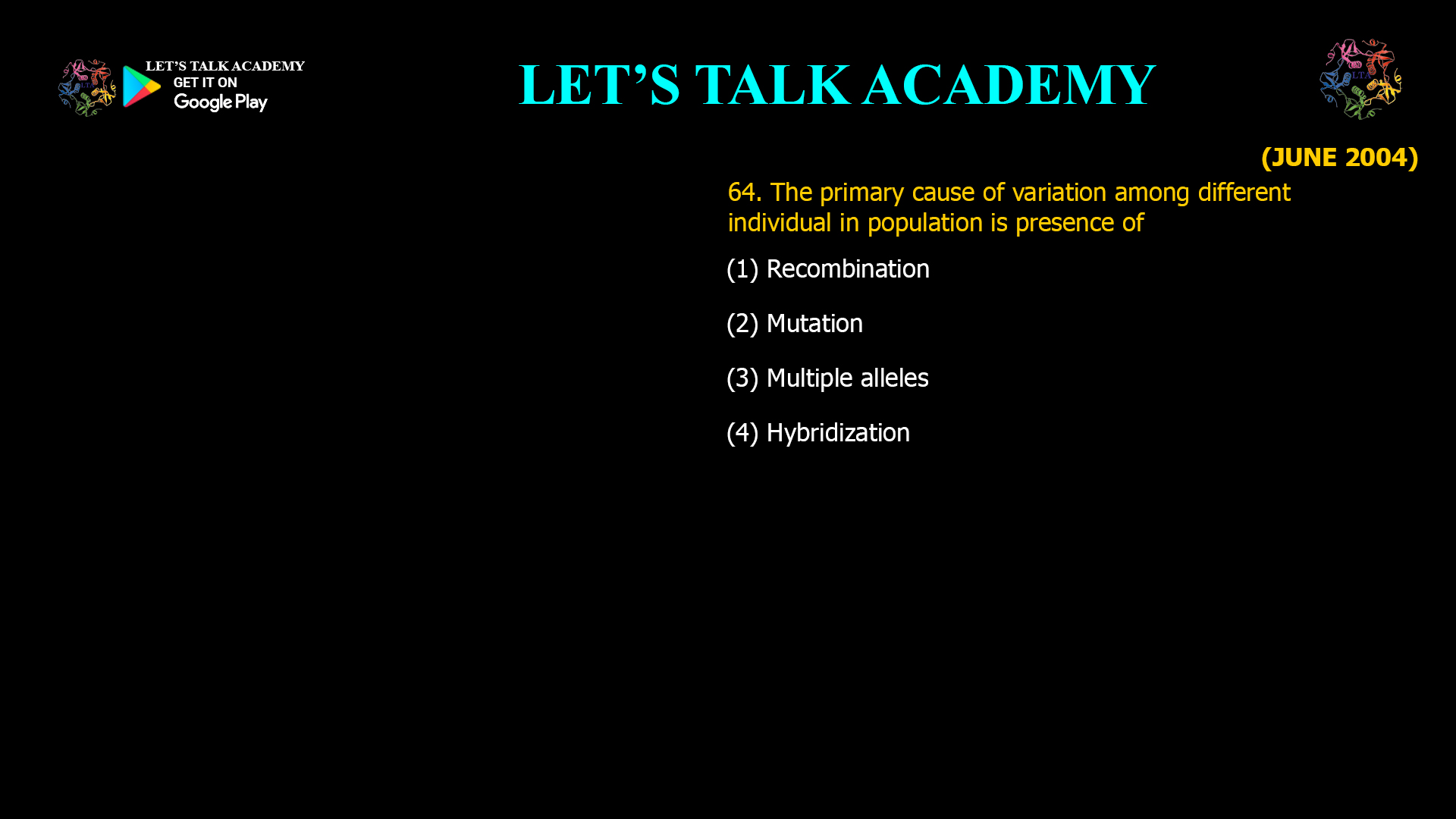- The primary cause of variation among different individual in population is presence of
(1) Recombination (2) Mutation
(3) Multiple alleles (4) HybridizationWhat is Genetic Variation?
Genetic variation refers to the differences in DNA sequences among individuals within a population. These differences can manifest as variations in physical traits, susceptibility to diseases, and overall fitness. Without genetic variation, populations would be unable to adapt to changing environments, making them vulnerable to extinction.
The Primary Cause: Mutation
Mutation is the process by which changes occur in the DNA sequence of an organism. These changes can happen spontaneously during DNA replication or be induced by environmental factors such as radiation or chemicals. Mutations can introduce entirely new alleles into a population, creating genetic diversity that did not previously exist.
-
Point mutations alter a single nucleotide.
-
Insertions and deletions add or remove sections of DNA.
-
Chromosomal mutations can duplicate, invert, or rearrange large segments of DNA.
While many mutations are neutral or even harmful, some can confer advantages that help individuals survive and reproduce. Over generations, beneficial mutations can become more common in the population, driving evolutionary change.
Other Sources of Genetic Variation
While mutation is the ultimate source, several other mechanisms contribute to genetic variation by reshuffling existing genetic material:
-
Recombination: During sexual reproduction, homologous chromosomes exchange segments in a process called crossing over. This recombination creates new combinations of alleles in offspring, increasing diversity.
-
Random Mating and Fertilization: The random pairing of gametes during sexual reproduction ensures that offspring have unique genetic makeups.
-
Multiple Alleles: The presence of multiple alleles at a gene locus increases the number of possible genotypes, but these alleles must first arise through mutation.
-
Hybridization: The crossing of individuals from different populations or species can introduce new gene combinations, but again, the underlying genetic differences originate from mutations.
Why Mutation is the Primary Cause
Although recombination, multiple alleles, and hybridization all contribute to genetic variation, they do so by rearranging or mixing existing genetic material. Only mutation can create entirely new genetic information—new alleles that were not present in the population before.
-
Mutation introduces novelty: Other processes depend on pre-existing variation, but mutation generates new alleles from scratch.
-
Foundation for other mechanisms: Recombination and hybridization can only act on the genetic differences created by mutations.
The Role of Mutation in Evolution
Mutation is essential for evolution because it provides the raw material for natural selection. Without new mutations, populations would eventually become genetically uniform, losing their ability to adapt to new challenges. Mutations ensure a continuous supply of genetic diversity, enabling populations to evolve and survive in changing environments.
Comparing Mutation to Other Sources
Source Creates New Alleles? Rearranges Existing Alleles? Primary or Secondary? Mutation Yes No Primary Recombination No Yes Secondary Multiple Alleles No (unless mutated) Yes (by selection) Secondary Hybridization No Yes Secondary Conclusion
The primary cause of variation among different individuals in a population is the presence of mutation. While recombination, multiple alleles, and hybridization all play important roles in generating diversity, they ultimately depend on mutations to introduce new genetic material into the gene pool. By continuously creating new alleles, mutations ensure that populations remain diverse, adaptable, and capable of evolving in response to environmental changes.
-




1 Comment
Sonal Nagar
November 14, 2025Mutation